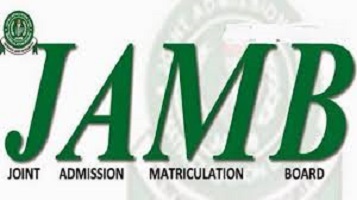French jamb syllabus 2023
The aim of the Unified Tertiary Matriculation Examination (UTME) syllabus in French is to
prepare the candidates for the Board’s examination. It is designed to test their achievement of the
course objectives, which are to:
1. assess written comprehension in French;
2. identify how French sounds work in speech production;
3. examine the culture of Francophone West Africa and France in relation (where possible) to
home country;
4. appreciate straightforward literary texts in French;
5. apply the principles governing the structure and use of written French.
1. Written Comprehension in French
– Topics of general and emergent
Interest e.g. love, life death, politics,
Marriage, HIV/AIDS,
Communication, child trafficking,
Cultism, travel, corruption, money
laundering etc.
2. Principles Governing the Structure and
Use of Written French
(1) Identification of basic form classes:
(a) Nouns – simple/compound,
Singular/plural masculine/feminine
(b) Pronouns – personal, impersonal,
Demonstrative, possessive and
Relative.
(c) Verbs
– reflexive and non-reflexive,
their moods and tenses.
(d) Adjectives
– qualifying
possessive, interrogative,
demonstrative, indefinite (e.g.
nul), numeral (e.g. dix) and
ordinal (e.g. dixième)
(e) Adverbs
– Common forms
i) with-ment (e.g. lentement)
ii) with préposition + noun
(e.g. par avion, à cheval,
en voiture, par bateau)
Candidates should be able to:
(i) deduce answers to question on the content,
Intent and style of proposed texts;
(ii) apply reasoning skills.
Candidates should be able to:
i. identify what constitutes the basic structures
of written French;
ii. use the principles governing the structure of
written French to determine acceptability,
e.g. to transform one form; one class to
another;
iii. apply the structure to convey diverse
messages;
– Special forms (e.g. bien, vite,
mal, mieux, le mieux, pire, le pis,
ne…que)
– Types
– Manner (e.g. debout,
facilement) – Purpose (e.g. pour +
Infinitive, afin de + infinitive
– cause and consequence (e.g. pour
+ infinitive perfect, à cause de +
noun)
– concession (e.g. malgré +
Noun)
– place (e.g. y, en, ici, là
– haut, partout)
– time (e.g. hier, aujourd’hui,
Avant hier, hier, après, demain, la
veille, le matin, dans un mois).
(f) Prépositions
– Simple (e.g. à, de, avec, avant,
Sur, dans)
– compound (e.g. à côté de, au
milieu de)
(g) Conjunctions
– of co-ordinatiion (e.g. mais, ou,
et, donc, car, cependant, ne…ni)
-of subordination (e.g. afin que,
quoique, à condition que, pour que,
parce que).
(h) Articles
– definite, indefinite and partitive
ii assessment of vocabulary span
(words in contemporary contexts
– meaning, use, opposites,
synonyms)
iii Importance of word order in:
(a) affirmative sentences
(b) interrogative sentences
(c) imperative sentences
(d) passive voice formation
iv Identification and application
of basic processes in language
structure, e.g.
(a) conjugation – in all tenses
except I’impartfait du
subjonctif, le passé composé du
subjonctif et……. le plus –
que parfait du
subjonctif.
(b) negation (e.g. ne…pas,
ne…plus, ne…rien, nul ne,
ni…ne, ne…personne,
personne…ne,
aucun….ne
rien ne….etc)
(c) agreement (e.g. les
beaux arts, il les a vues
les photos)
(d) pluralisation (e.g. as in
cheval/chevaux;
beau/beaux)
(e) derivation
-from adj, to adv –
e.g. lent-lentement
-from adj. to adj. e.g.
un – premier
-from adj. to noun – e.g.
bon-bonté,
riche-richesse etc
-from one degree of
comparison to another
(using plus…que,
moins….que,
aussi….que e.g. plus
grand que)
NB – special forms –
(e.g. bon, meilleur, le meilleur
la meilleure, mauvais,
pire, le pire)
(v) Use of French in set
Expressions such as in proverbs,
idioms and conventional
structures as provided for in
common speech acts:
(a) proverbs (e.g. tel père
tel fils, petit à petit
l’oiseau fait son nid)
(b) idioms (e.g. avoir une
faim de loup, crier sur
le toit, mourir de peur)
(c) conventional stretches
(e.g. enchanté, c’est
dommage,
formidable,
stationnement interdit
etc)
(d) speech acts (e.g.
proposer, conseiller.
regretter, admirer
espérer, interroger,
reprocher, s’accorder etc)
v) apply communicative skills.
French
3. Working of French Sounds
via:
(a) Sound discrimination
(e.g. tout/tu)
(b) letter-sound
correspondence
(e.g. ai-/e/, ais-/e/)
(c) syllabification (e.g.
con/tente/ment)
(d) liaison (e.g. trois animaux
Cas unique)
(e) sense groups in reading
(e.g. J’ai mal à la tête)
(f) cognates and faux amis
(e.g. président, nation)
(g) identification of sounds to
determine similarity (e.g.
maison/saison, dents/don,fond/
fonde).
4. Literature
– study of selected texts:
identification of
characteristics features of
creative writing e.g. plot,
charaters, theme,
setting and style (use of
Language, imageries etc,
Candidates should be able to:
(i) discriminate between French sounds
(ii) deduce meanings out of sound
combinations;
(iii) use the above to enhance effective
communication;
(iv) assess sound groupings in terms of
how they are affected by such
features as syllabification, liaison,
e-caduc; pause, intonation, etc.
Candidates should be able to:
(i) interpret the contents of selected
straight-forward creative writings;
(ii) compare the contents in terms of the
style and form of narration;
(iii) assess their relevance to social life.
